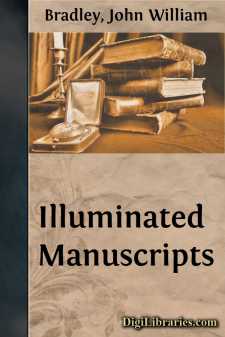Categories
- Antiques & Collectibles 13
- Architecture 36
- Art 48
- Bibles 22
- Biography & Autobiography 813
- Body, Mind & Spirit 142
- Business & Economics 28
- Children's Books 15
- Children's Fiction 12
- Computers 4
- Cooking 94
- Crafts & Hobbies 4
- Drama 346
- Education 46
- Family & Relationships 57
- Fiction 11828
- Games 19
- Gardening 17
- Health & Fitness 34
- History 1377
- House & Home 1
- Humor 147
- Juvenile Fiction 1873
- Juvenile Nonfiction 202
- Language Arts & Disciplines 88
- Law 16
- Literary Collections 686
- Literary Criticism 179
- Mathematics 13
- Medical 41
- Music 40
- Nature 179
- Non-Classifiable 1768
- Performing Arts 7
- Periodicals 1453
- Philosophy 64
- Photography 2
- Poetry 896
- Political Science 203
- Psychology 42
- Reference 154
- Religion 513
- Science 126
- Self-Help 84
- Social Science 81
- Sports & Recreation 34
- Study Aids 3
- Technology & Engineering 59
- Transportation 23
- Travel 463
- True Crime 29
Illuminated Manuscripts
Categories:
Description:
Excerpt
CHAPTER I
INTRODUCTORY
What is meant by art?—The art faculty—How artists may be compared—The aim of illumination—Distinction between illumination and miniature—Definition of illumination—The first miniature painter—Origin of the term “miniature”—Ovid's allusion to his little book.
The desire for decoration is probably as old as the human race. Nature, of course, is the source of beauty, and this natural beauty affects something within us which has or is the faculty of reproducing the cause of its emotion in a material form. Whether the reproduction be such as to appeal to the eye or the ear depends on the cast of the faculty. In a mild or elementary form, probably both casts of faculty exist in every animated creature, and especially in the human being.
Art being the intelligent representation of that quality of beauty which appeals to any particular observer, whoever exercises the faculty of such representation is an artist.
Greatness or otherwise is simply the measure of the faculty, for in Nature herself there is no restriction. There is always enough of beauty in Nature to fill the mightiest capacity of human genius. Artists, therefore, are measured by comparison with each other in reference to the fraction of art which they attempt to reproduce.
The art of illumination does not aim at more than the gratification of those who take pleasure in books. Its highest ambition is to make books beautiful.
To some persons, perhaps, all ordinary books are ugly and distasteful. Probably they are so to the average schoolboy. Hence the laudable endeavour among publishers of school-books to make them attractive. The desire that books should be made attractive is of great antiquity. How far back in the world's history we should have to go to get in front of it we cannot venture to reckon. The methods of making books attractive are numerous and varied. That to which we shall confine our attention is a rather special one. Both its processes and its results are peculiar. Mere pictures or pretty ornamental letters in sweet colours and elegant drawing do not constitute illumination, though they do form essential contributions towards it; and, indeed, in the sixteenth century the clever practitioners who wished, in bright colours, to awaken up the old woodcuts used to call themselves illuminists, and the old German books which taught how the work should be done were called Illuminir bücher. Illuminists were not illuminators.
In the twelfth century when, as far as we know, the word illuminator was first applied to one who practised the art of book decoration, it meant one who “lighted up” the page of the book with bright colours and burnished gold.
These processes suggest the definition of the art. Perfect illumination must contain both colours and metals. To this extent it is in perfect unison with the other mediæval art of heraldry; it might almost be called a twin-sister.
As an art it is much older than its name. We find something very like it even among the ancient Egyptians, for in the Louvre at Paris is a papyrus containing paintings of funeral ceremonies, executed in bright colours and touched in its high lights with pencilled gold....


